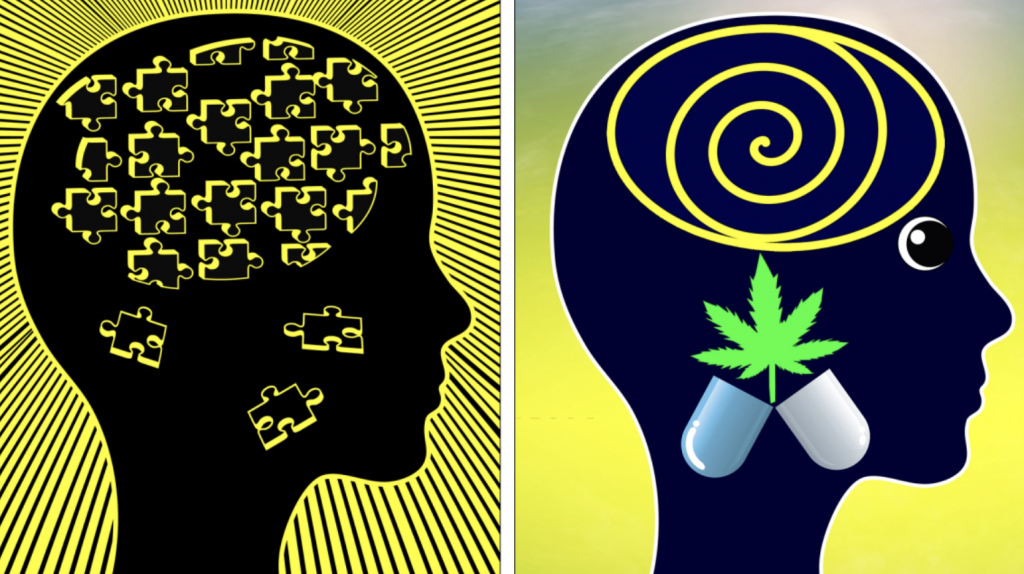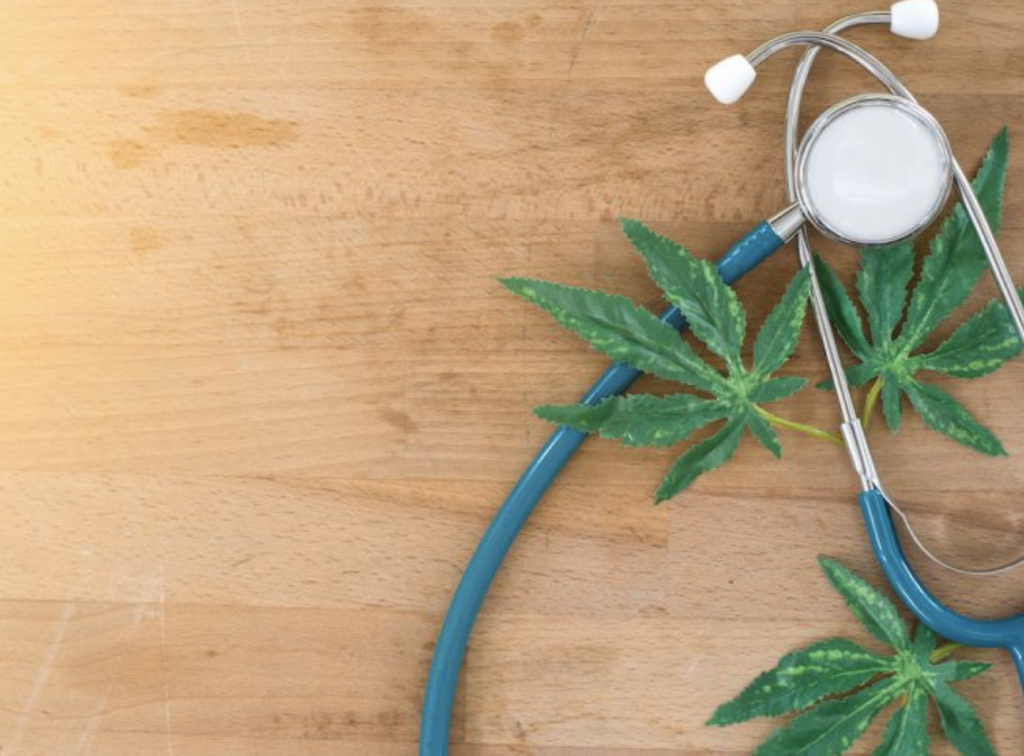
Migraine headaches can be a serious nightmare and a very stubborn medical condition to manage. If you don’t get relief from the pains and other symptoms of migraine with over-the-counter medications, is there any other alternative?
Yes, medical cannabis may help those suffering from migraines. In some states, before you purchase cannabis, you must first get your medical marijuana recommendation and apply to a medical cannabis program. Before we talk about how to get your medical marijuana certification, aka your mmj rec, we would like to briefly describe how cannabis may help migraines.
Migraine is a strong headache that often comes with nausea, vomiting, and sensitivity to light amidst other presenting symptoms. Most migraine headaches can last for hours or even days. Early-onset of the condition may present people with various symptoms. Symptoms in the aura phase include flashes of light, ringing in the ear, and changes in smell, taste, or even touch.
These symptoms can last for less than an hour while others last much longer. The migraine headache often begins as a dull ache and moves over to throbbing pain which gets worse with physical activity. This pain can move from one side of the head to the other and it is normally associated with nausea. Most cases of migraine headache may last for about 4-5 hours but severe cases can go for more than 3 days.
Cannabis, also known as Marijuana, is a bushy plant that is used to make ropes, paper, and other products. This plant today is being used both for its medical properties and common enjoyment. The plant contains a natural substance called cannabinoids that can produce a variety of effects.
Medical cannabis has been used as medicine arguably as far as 5,000 years. Here in the United States, medical marijuana has been used to treat more and more medical ailments. There are now even some FDA-approved prescription drugs that contain cannabis or synthetic cannabis. These approved drugs are used to treat things such as AIDs and cancers.
How does this work?
Inside the human brain and some parts of your body are some networks of cannabinoid receptors. These are tiny loops of protein that affect how one feels pain. There are three main components of our body’s endocannabinoid system:
- Cannabinoid receptors such as CB1 and CB2. CB1 is found in the central nervous system and is responsible for the cognitive and emotional effects of cannabis. CB2 receptors are found in our peripheral nervous system as well as in our immune cells.
- Endogenous cannabinoids
- Enzymes that help break down and use cannabinoids
Our natural endocannabinoids function on-demand, meaning that when our body senses inflammation, pain, or needs to return to a state of stable balance, it will release endocannabinoids that bind to cannabinoid receptors. Cannabidiol (CBD) itself does not bind to receptors but is thought to work by inducing other components of the cannabinoid system.
In fact, CBD exerts a wide array of effects on the body’s central and peripheral nervous systems, as well as the immune system. It works in conjunction with our endocannabinoid system to decrease inflammation, and act as an analgesic or pain reliever.
When you take cannabis, it releases the active substances cannabinoids, which go into the body and locate the cannabinoid receptors. Binding to these receptors brings about change in the function of these receptors.

The Effect of Cannabis on Migraine
Many people have asked if cannabis is best for the prevention of migraine attacks or in providing relief of pain. Of course, the answer to this question is: Both
In relation to the effect of cannabis on migraine headaches, limited research has been conducted. Overall, there have been studies suggesting that with the administration of cannabis, there have been improvements in migraine or other types of headaches.
One of the large studies included 121 adults participants who had migraines. They used migraine medications alongside cannabis in edible and inhaled form. Of this group of participants, 19.8% experienced a decrease in migraine frequency, 11.6% experienced improvement of acute migraine attacks and 11.6% experienced the side effects of these combinations. The common side effects were tiredness and difficulty controlling the timing and intensity of cannabis.
A clinical trial was carried out for both the prevention and relieving effects of cannabis. It was observed that for migraine prevention, a 200mg daily dose of combined cannabinoids was as effective as a 25mg daily dose of some common migraine medicine. When administered to a patient with an acute migraine attack, it was observed to reduce the intensity of the pain by 43.5% at the same dosage.
Nevertheless, medical cannabis affects everyone differently. There are so many factors that can alter the effects of cannabis in your system starting from your genetic makeup, to your overall health condition and tolerance towards the drug.
How to get your Medical Marijuana Recommendation Online
The first step to getting your medical marijuana recommendation online is to sign up on FadeMD. You will have to create a username and password, answer a few questions about your medical history and enter your payment information before scheduling a consultation with a licensed medical practitioner. Once you are approved, in most states you will also have to complete a state application before being able to purchase medical cannabis. Your medical marijuana recommendation will be required in order to complete your state medical marijuana application in most states.
Takeaway
In conclusion, medical cannabis can be an important tool in the prevention of migraine headaches and management of its associated symptoms but certainly not a cure for migraine. Before you accept to take cannabis in any form, make sure you have properly discussed it with your doctor to ensure that it is a viable treatment option for your health condition.
In general, for you to be qualified for legal medical marijuana, patients must have a diagnosed condition that is on their state’s medical marijuana conditions and receive a medical recommendation from their doctor. The patient can then obtain a medical marijuana card or recommendation in order to purchase medical marijuana and associated products from dispensaries.
For the general public, it is advisable to be aware of the legal actions concerning the use of cannabis in your locality as most countries have strict rules and regulations concerning the use of cannabis.
Disclaimer: The information, including but not limited to, text, graphics, images and other material contained in this article is for informational purposes only. No material from this article is intended to be a substitute for professional medical advice, diagnosis, or treatment.
Always seek the advice of your physician or other qualified health care provider with any questions you may have regarding a medical condition or treatment before undertaking a new health care regimen. Never disregard professional medical advice or delay in seeking it because of something you have read on this website.
References
- https://www.webmd.com/migraine-headache/migraine-headache-migraine
- https://www.veryweelhealth.com/marijuana-for-migraine-treatment-171986
- https://www.healthline.com/health/migraine/facts-about-cannabis-and-migraine-that-might-surprise-you#cannabis-can-be-both-protective-and-abortive
- https://www.google.com/amp/s/www.practicalpainmanagement.com/amp/37893
- https://www.everdayhealth.com/marijuana
